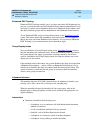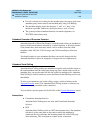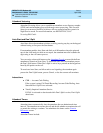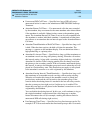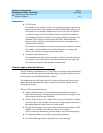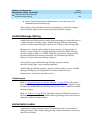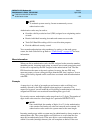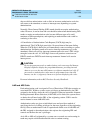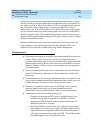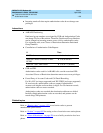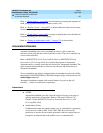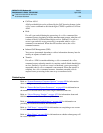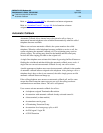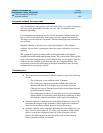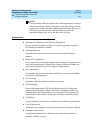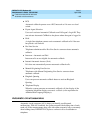
DEFINITY ECS Release 8.2
Administrator’s Guide
555-233-506
Issue 1
April 2000
Features and technical reference
1155Authorization codes
20
Extreme care should be taken when administering authorization codes, so that a
user does not have to dial the authorization code more than once. For example, if a
user makes an AAR or ARS call and the user’s FRL is not high enough to access
any of the trunks in the routing pattern, the system prompts the user for an
authorization code. If the FRL assigned to the authorization code is high enough
to access the next trunk group in the routing pattern, the user is not prompted to
dial the code again. If the call is routed through another switch, the user may be
required to dial an authorization code again. This type of situation can be avoided
through careful administration.
When an authorization code is required on some, but not all, trunk groups, the
system prompts for an authorization code when the originating FRL is not
adequate to access the next available trunk group in the routing pattern.
Considerations
■ From remote locations users typically access authorization from touch-tone
stations. However they can also do so from rotary dialing stations at
specified authorization-code-forced locations that follow appropriate trunk
administration practices. Rotary station users access attendants via Listed
Directory Numbers (LDN) or remote access numbers and can experience a
10-second timeout.
■ The use of Authorization Codes does not limit other call-control methods
such as Toll Restriction, Miscellaneous Trunk Restriction, and Outward
Restriction.
■ For security reasons, do not assign authorization codes in sequential order.
Assign random number barrier codes and authorization codes to users so if
a hacker deciphers one code, it will not lead to the next code.
■ If timeout to attendant does not occur or CACR digit codes are dialed
instead of authorization codes, the system assumes that invalid
authorization codes were dialed and the caller is given intercept tones.
■ Authorization codes impact calling privileges by:
— Changing an outgoing-call FRL when it is insufficient to access
preferred routing patterns assigned by AAR/ARS. An FRL is
assigned to a COR associated with user authorization codes. No
additional COR data is assigned.
— Overriding COR for remote access calls assigned to barrier codes,
when required. For remote-access calls, if an authorization code is
required, the user is assigned the COR of the dialed authorization
code, with all connected data, such as the FRL. This COR overrides
the COR assigned to any required barrier code.



